The king symbolizes the king in ancient India, who always belonged to the warrior caste and led his troops. Protecting one's own king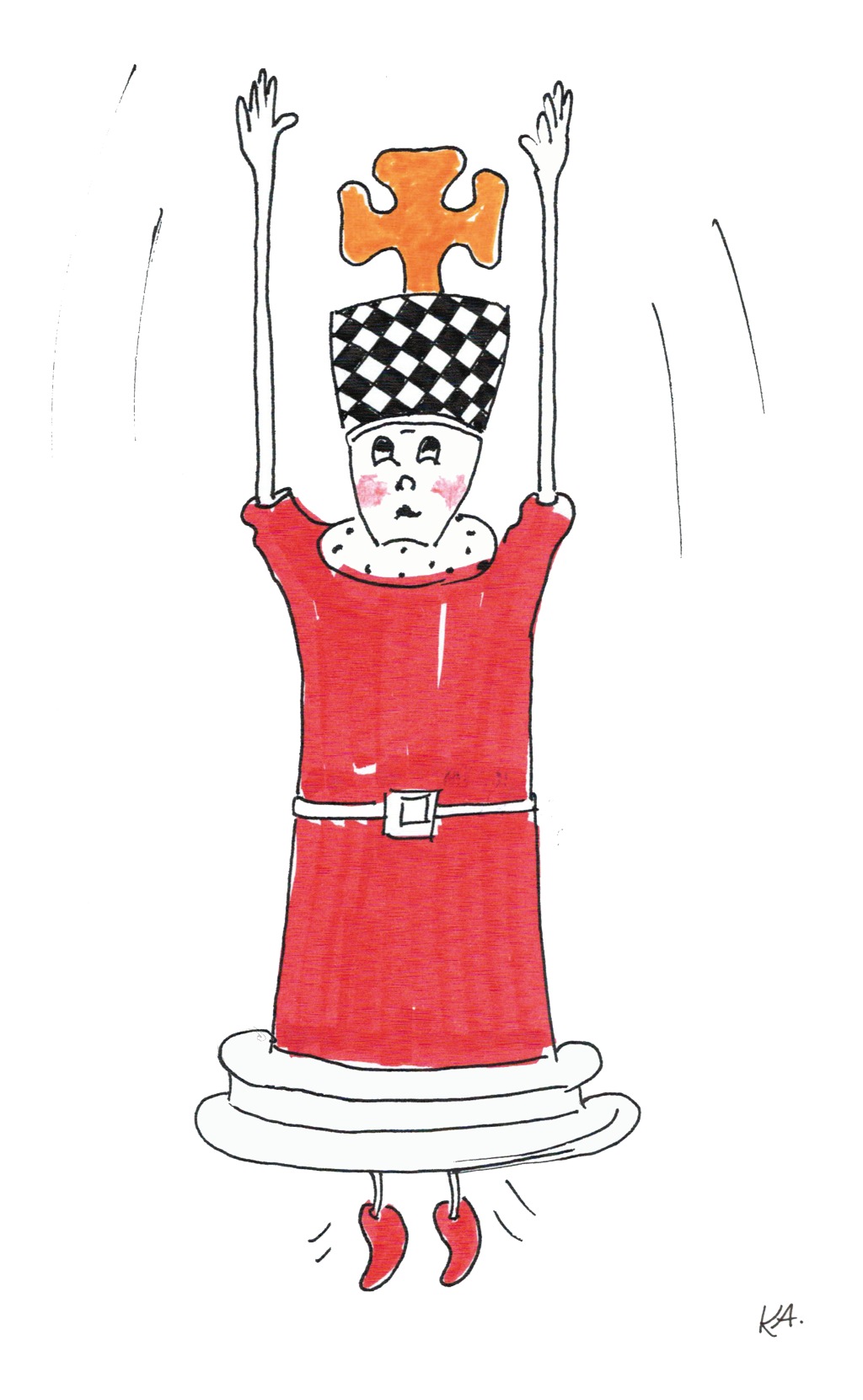 and defeating the opponent's king is paramount and the goal of chess then as now. At the beginning of the game of chess, the king appears as a fearful piece that must be protected. For most of the chess game, he hides behind his own forces, as he does in the starting position. But when there are only few enemy pieces left, and the danger of something happening to him is very low, his valuable and strong character shows itself and he becomes the most important piece. Therefore, the most important rule in the endgame with few pieces is: activate your king!
and defeating the opponent's king is paramount and the goal of chess then as now. At the beginning of the game of chess, the king appears as a fearful piece that must be protected. For most of the chess game, he hides behind his own forces, as he does in the starting position. But when there are only few enemy pieces left, and the danger of something happening to him is very low, his valuable and strong character shows itself and he becomes the most important piece. Therefore, the most important rule in the endgame with few pieces is: activate your king!
Just as the real king in ancient India as the supreme ruler was "allowed everything", he is also allowed to make a move on the chessboard in any direction, i.e. forward, backward, sideways or even diagonally. However, one step per move is enough for the king, because his majesty does not need to rush. What is the point of hurrying if he can stroll all around the chessboard in the long run?
The movement of the king at a glance:
- one step in any direction
- forward, backward, diagonally
- The king captures just as he moves; if an opponent's piece is within his range, he can take it off the board and move in its place.
- Conversely, the king must never put himself in danger, i.e. he must never place himself on a square where an opponent's piece could capture him. For if the king is lost, all is lost, and so it was in the ancient Indian army.
- Therefore, the two kings must never stand on adjacent squares, because then one king could capture the other. At least one square must be between them (a sign of respect to the other king).
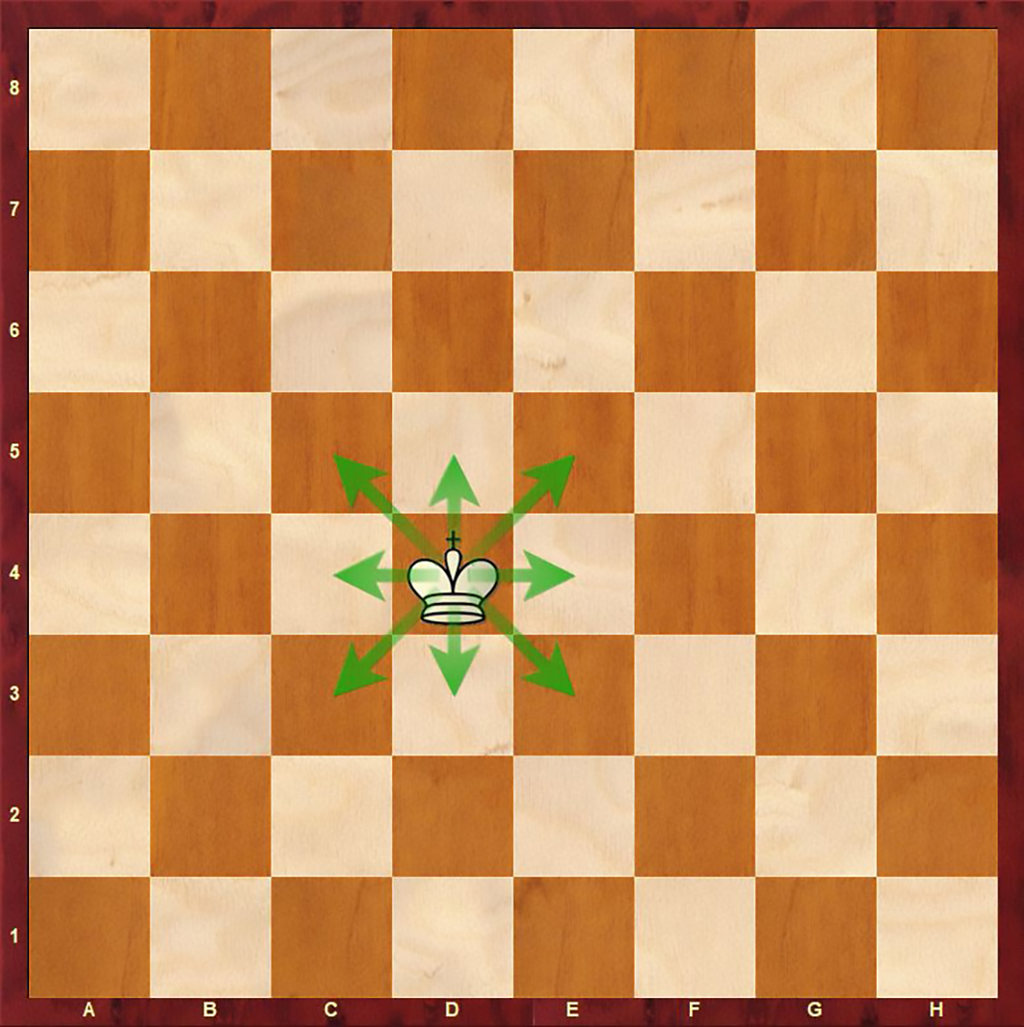
Video about the king in German language with English subtitles:
Opposition and Zugzwang
The opposition is a face-off between the kings. Since the kings are never allowed to get quite close to each other, they can get in each other's way and make important squares inaccessible to the other king. In opposition, the kings face each other head-on, while one square separates them.
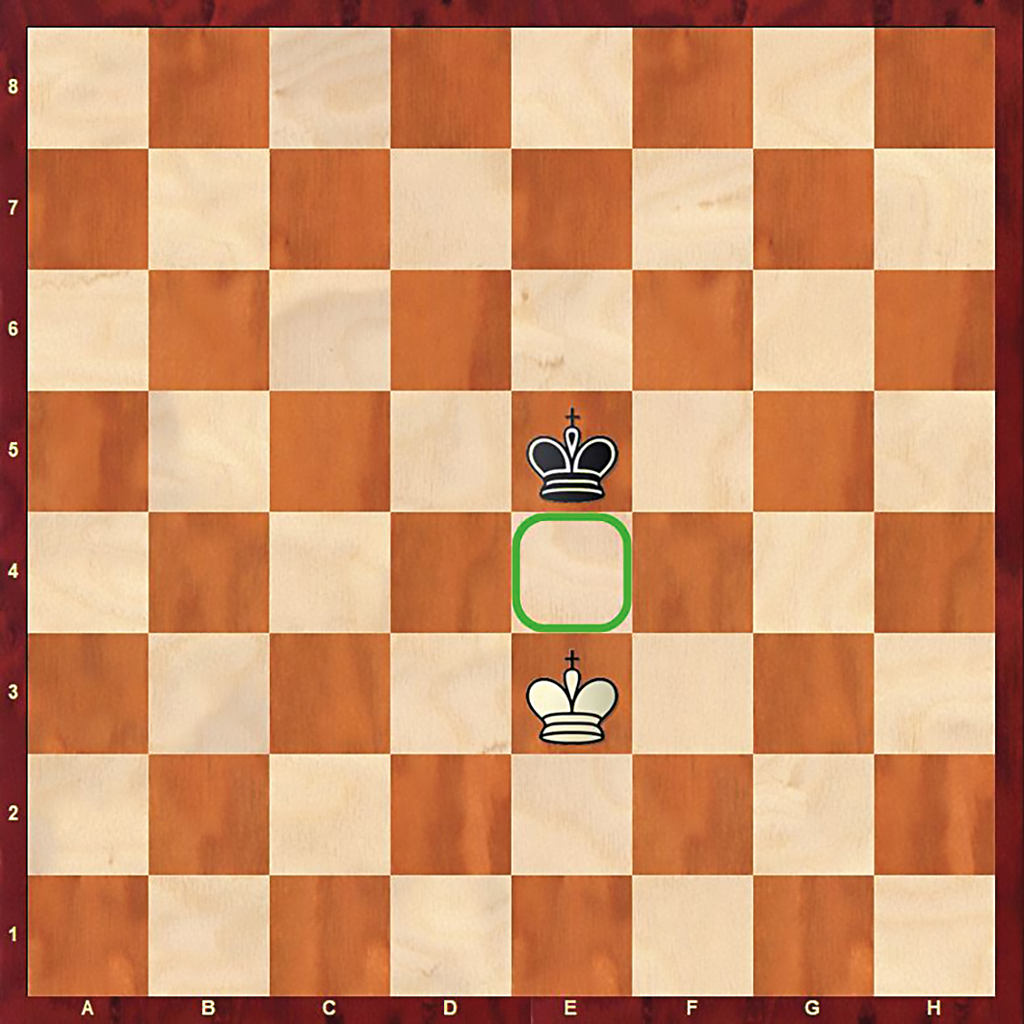
Important: One side is said to "have the opposition" and is thus at an advantage when it is the other side's turn!
Because then the other king must give way to the side and clear the way. We can then think of the two kings as giant fighters or sumo wrestlers, each pushing the other king to the side with all their might. If you have to make a move that is harmful for you, it is called zugzwang. This is often a very important method in endgames with few pieces. Just imagine you got the best seat in a crowded subway, but now you unfortunately have to stand up ... The same is true for a king that is forced to move.
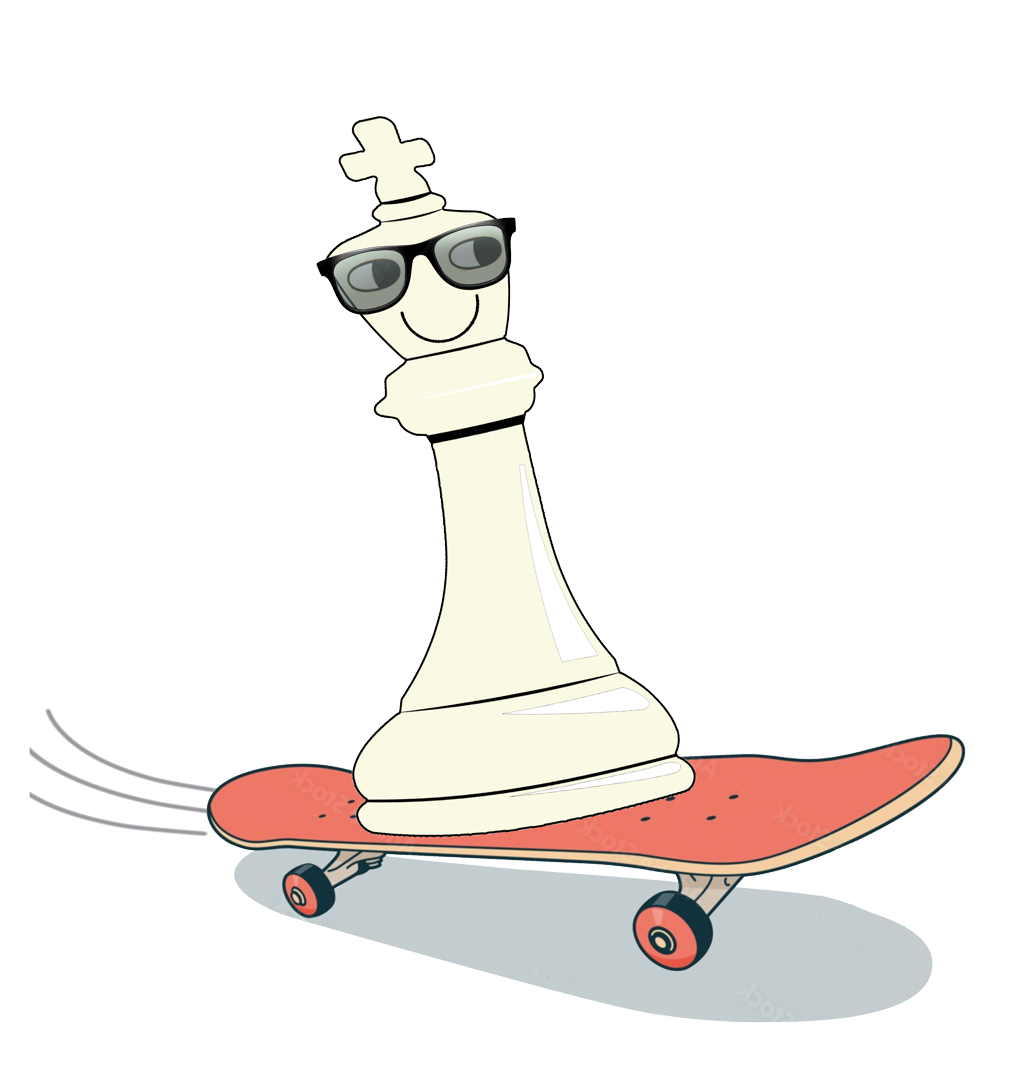 King's Plan Games with the Kings
King's Plan Games with the Kings
The Great Treasure Hunt
In the center of the board are eight white and eight black pawns, each symbolizing a treasure.
The pawns can also be replaced by sweets or nuts, for example. Each player gets a king on e1 or e8 (see Figure 7). As in classical chess, White has the first move. The goal of the game is to capture as many treasures (pawns) as possible. Both white and black pawns can be captured, because in this game they merely represent treasures of different colors, and cannot move. Once all have been captured, the collected treasures are counted and the player with the most treasures wins. If two players have collected the same number of treasures, the game is a draw.
But beware: if a king shows too little respect and places himself right next to the other king, this intruder may be captured by the other king and the captured one must return to his starting square as a penalty. This is because, as in classical chess, kings are not allowed to stand directly next to each other.
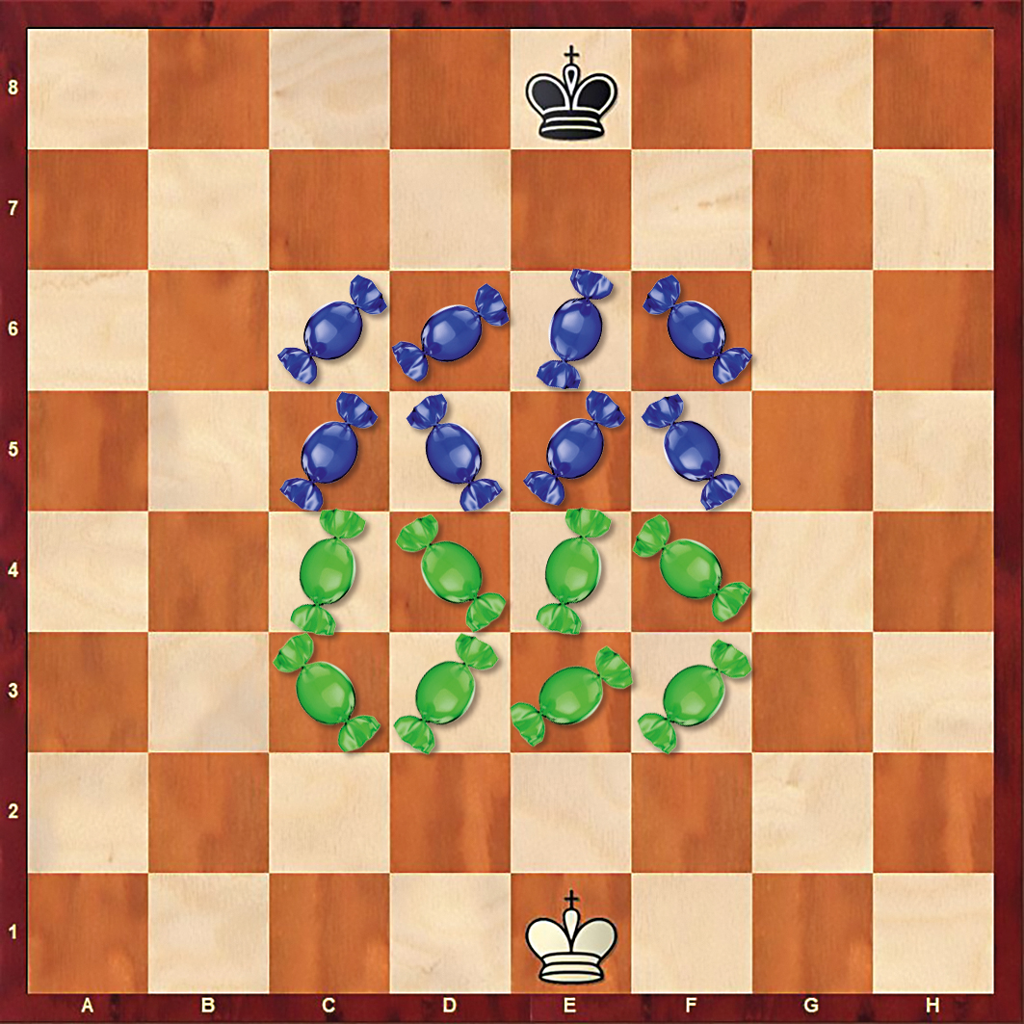
The Chess Millions Quiz
In this practice game (see Figure 8), you are White and win if your king manages to advance to a square on the eighth and last rank. However, the Black king will try to prevent you from doing so. Although there are only two kings on the chessboard, you can practice real chess thinking here! And here comes the quiz: If White wants to get ahead and then win, you have three squares to choose from: a5, b5 or c5. But just like in a million dollar show, only one answer is correct and gives White the win!
To solve this exercise, you also need to put yourself in Black's shoes and imagine what the best defense is for him. This is a very important skill, because in other areas of life, too, it is very important to put yourself in other people's shoes and imagine what they will do and what is important to them. And it is also about "thinking in variations," as they call it in chess. That means imagining different possibilities and thinking about what would come out of them. In the end, you choose the possibility that leads to the best result. So now you can take your time and consider which option you will choose: With which move do you succeed in breaking through to the eighth rank with White, and why would the other two moves be much weaker?
Solution:
The moves 1.Kc5 or 1.Kb5 are not successful, because Black takes the opposition: 1.Kc5 Kc7 or 1.Kb5 Kb7 and White does not get any further. Much better is 1.Ka5. Now White wants to advance by 2.Ka6. Black can only prevent this with 1...Kb7. But now White plays 2.Kb5 and Black is forced to move! The black king is in an optimal position, but he has to move and thus clear the way for the white king! It could go on like this: 2...Kc7 3.Ka6 Kb8 4.Kb6 (White takes the opposition again and Black is again forced to move!) 4...Kc8 5.Ka7 and in the next move White reaches the eighth rank and has won the practice game.
Exercises for "The King”